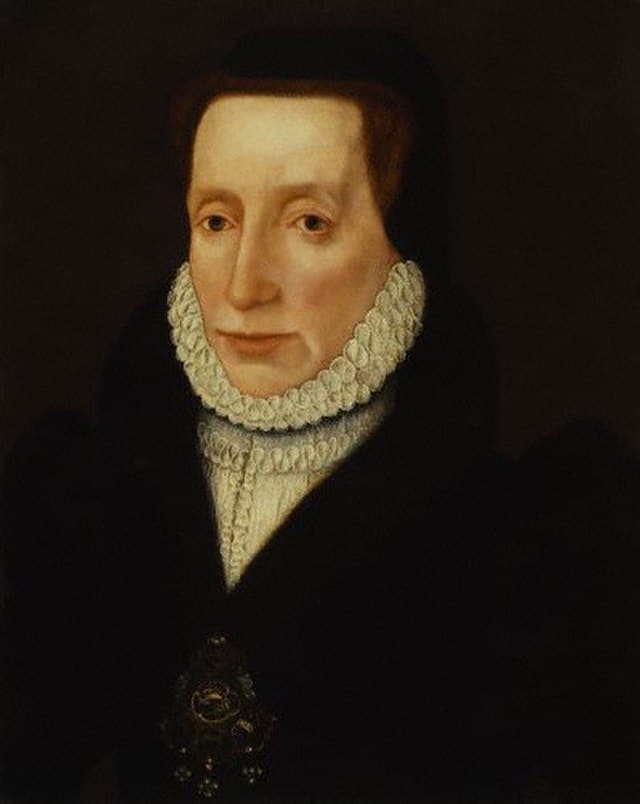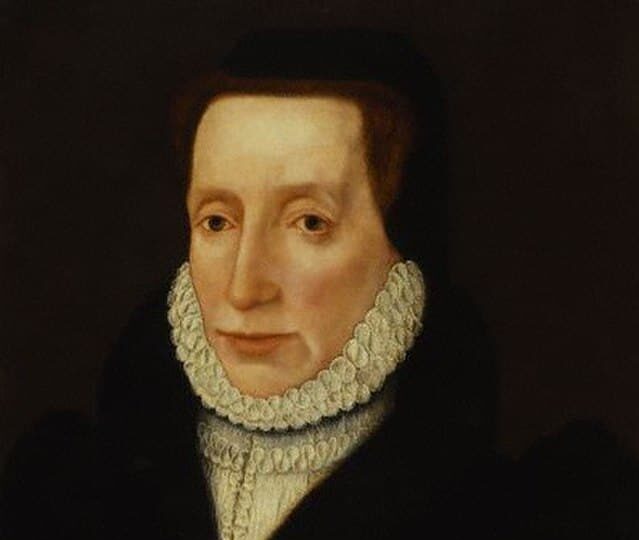
Margaret Douglas was the daughter that Margaret Tudor bore shortly after marrying her second husband, Archibald Douglas, the Sixth Earl of Angus. Margaret Douglas would go on to become the mother of Henry, Lord Darnley – and therefore mother-in-law to Mary of Scotland. But let’s back up for context.
In 1503, King Henry VII and James IV of Scotland signed the Treaty of Perpetual Peace – Henry’s bid to disrupt/replace the traditional Auld Alliance between Scotland and France. To cement the treaty, Henry’s daughter, Margaret Tudor, was sent north to marry James. Nevertheless, James maintained friendly relations with France…which was fine when Henry VII was king but was much less so when Henry VIII came to the throne in 1509. The new king, besotted by his new wife (Catherine of Aragon), joined Spain and the Holy Roman Empire in heeding the call to a Holy League proclaimed by Pope Julius against France. Faced with invasions from England and Spain, France turned to Scotland for help. In a show of solidarity with his ancient ally, James sent an army across the border into England…and died in the Battle of Flodden field. His seventeen-month-old son became James V, and under the terms of his will, Margaret became Regent. But resentment ran high against the English, and Margaret’s authority was challenged by the French-born Duke of Albany (who was James V’s second cousin and the nearest male heir to the throne after the King’s younger brother). In need of allies at court, in 1514 Margaret married the powerful Archibald Douglas – but that only made things worse. Margaret lost the Regency and had to give up custody of her sons; she fled to England where she gave birth to her daughter Margaret Douglas. Now we’re caught up.
Margaret Tudor returned to Scotland, leaving Margaret Douglas to be brought up at the English court. She became good friends with the Princess Mary, and was in high favor with King Henry…until she tried to marry Lord Thomas Howard (not the Duke , you’re thinking of – a cousin of his). The two were thrown into the Tower for that’ Howard died there I 1536 and Margaret was released the year after. She was allowed back at Court, but in 1540 she had an affair with Charles Howard, brother to Henry’s then-wife Catherine. Oof. She was forgiven again, becoming one of Katherine Parr’s chief ladies, and finally married Matthew Stewart, Earl of Lennox. They had eight or nine children, though only two sons who survived to manhood – the older of whom was Henry Stewart, known as Lord Darnley during Matthew’s lifetime.
When Mary came to the throne, she naturally exalted her cousin – and tried unsuccessfully to get her named as successor to the throne. On Mary’s death, Margaret was chief mourner before moving to Yorkshire and fomenting Catholic intrigue. She was thrilled when her son Henry, Lord Darnley, married the Queen of Scots…much less so when he was assassinated. And she never stopped trying to get one of her line onto the English throne. But I’m getting a little ahead of things. For today, let us simply celebrate the birth of a potential Tudor heir…
***
If you like my posts, you’ll love my books! My Seymour Saga trilogy tells the gripping story of the short-lived dynasty that shaped the Tudor Era. Jane the Quene skews romantic, The Path to Somerset is pure Game of Thrones (without the dragons), and The Boy King is a noir coming-of-age. Get them now through Amazon, Barnes & Noble, Kobo, and Apple, or even your local independent bookstore!

(PS Already read them? Did you love them? Then please review them – even just a stars rating! It makes a huge difference in helping new readers find them and would mean the world to me!)

Have you read Jen Black’s hisfic about Margaret Douglas? Very good reads–pun intended!–and perfectly researched.
Ooh! No! Another addition to my towering TBR list….